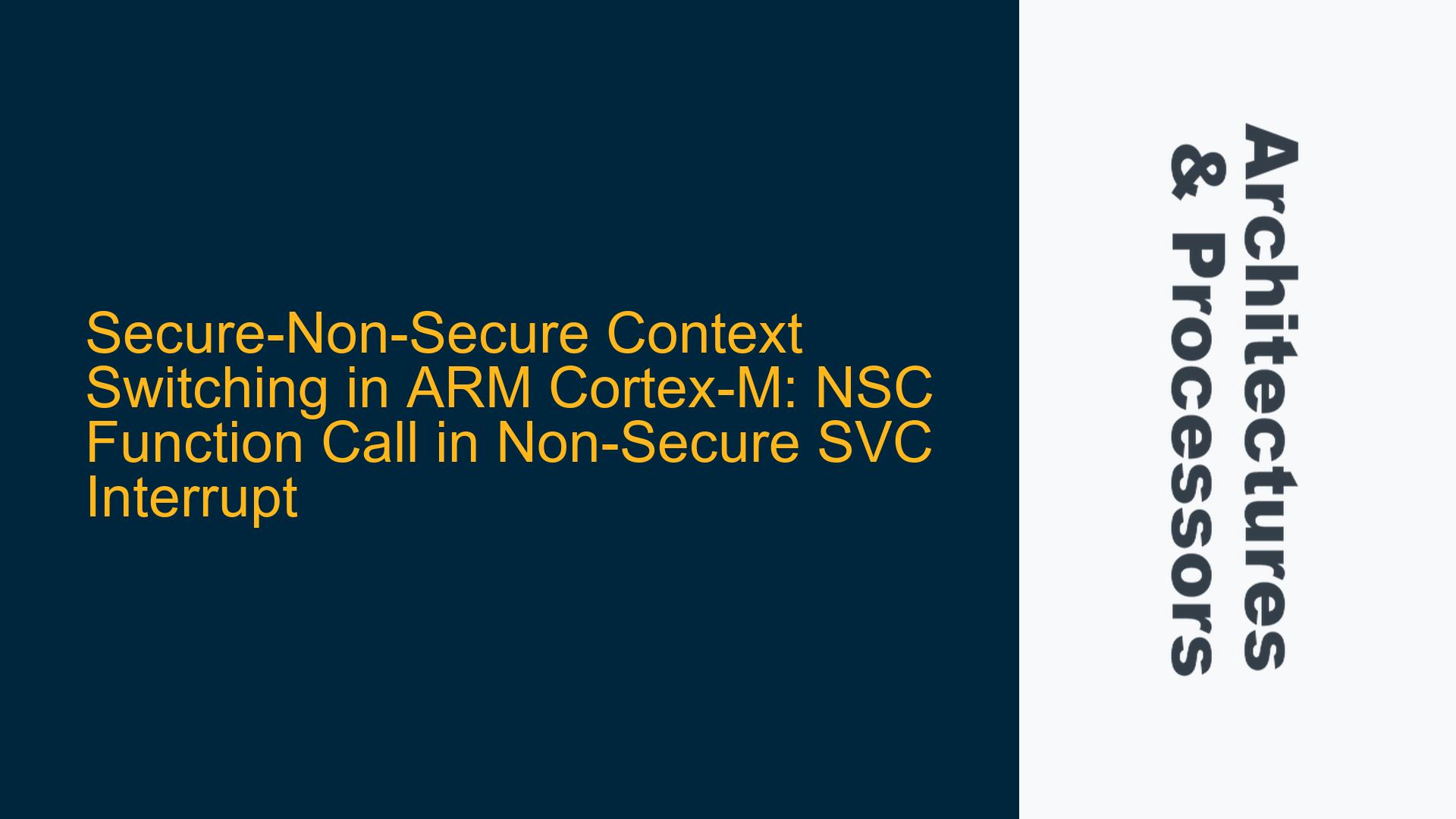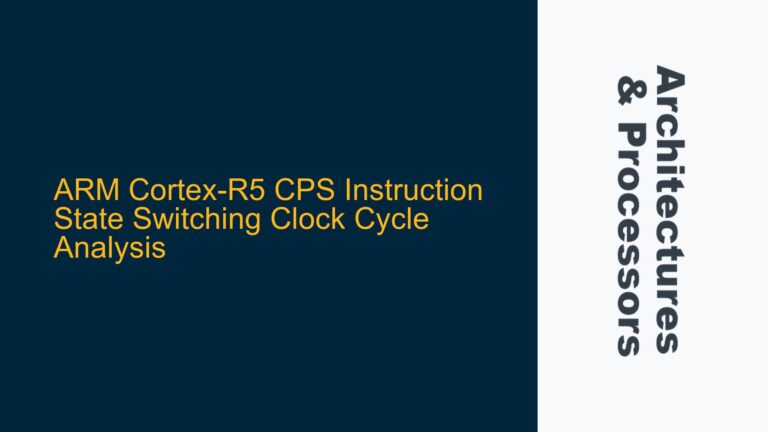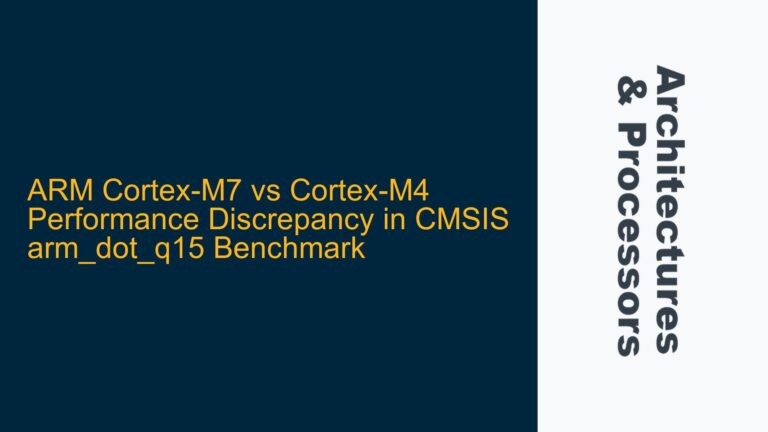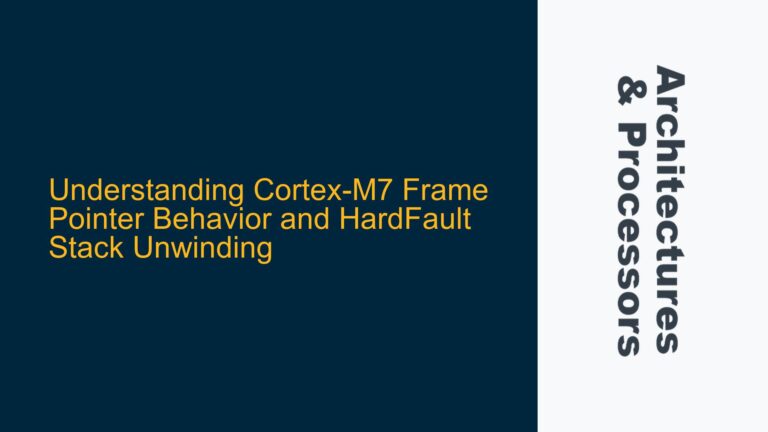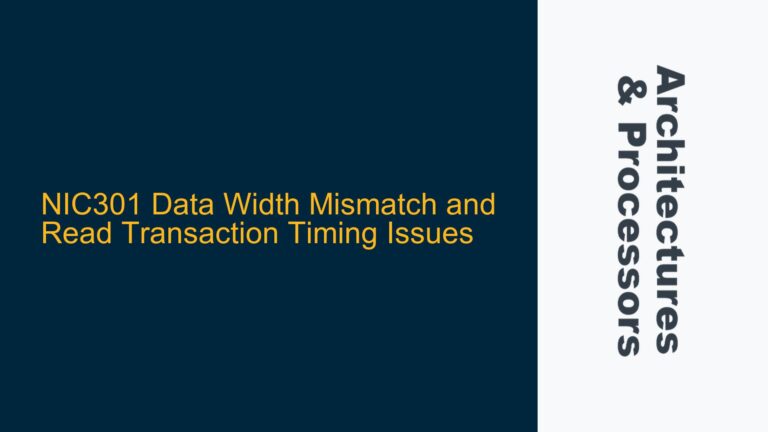Secure State Transition and Stack Pointer Behavior During NSC Function Calls
When a Non-Secure Callable (NSC) function is invoked within a non-secure SVC interrupt service routine, the ARM Cortex-M processor undergoes a state transition from non-secure to secure state. This transition involves several critical architectural mechanisms, including the handling of stack pointers and processor modes. The primary issue arises when the PUSH {R4-R6, LR} instruction is executed in the secure state, but the Process Stack Pointer (PSP_S) is reported as 0x00000000. This raises the question: where are the registers R4-R6 and LR being pushed?
The confusion stems from the interaction between the processor’s mode (Handler vs. Thread), the active stack pointer (MSP_S vs. PSP_S), and the state transition mechanisms defined by the ARMv8-M architecture. The processor remains in Handler mode during the state transition, which means the Main Stack Pointer (MSP_S) is used for stack operations, not the PSP_S. However, the debugger or IDE may incorrectly display the stack pointer value as 0x00000000, leading to misinterpretation of the stack behavior.
Handler Mode Retention and Secure Stack Pointer Initialization
The ARMv8-M architecture specifies that when a non-secure SVC interrupt triggers a transition to the secure state via an NSC function, the processor remains in Handler mode. This is because the SVC interrupt is inherently a synchronous exception, and the processor does not switch to Thread mode during the state transition. Consequently, the stack pointer used in the secure state is the Main Stack Pointer (MSP_S), not the Process Stack Pointer (PSP_S). The PSP_S is typically unused in Handler mode, which explains why it is reported as 0x00000000.
However, the secure stack pointer (MSP_S) must be properly initialized before the state transition. If the MSP_S is not initialized, the PUSH operation could result in undefined behavior, such as writing to invalid memory locations. This is particularly critical in secure state operations, where stack integrity is paramount for maintaining system security. The ARMv8-M architecture mandates that the secure stack pointer be initialized to a valid memory region before any secure function is called. Failure to do so can lead to stack corruption or security vulnerabilities.
Debugging and Resolving Stack Pointer Display Issues in IDEs
The discrepancy between the actual stack pointer behavior and the IDE’s display of PSP_S = 0x00000000 is likely due to limitations in the debugger’s ability to accurately reflect the active stack pointer during secure state transitions. Debuggers often struggle to correctly interpret the secure state stack pointers, especially when the processor is in Handler mode. This can lead to misleading information, such as the PSP_S being displayed as 0x00000000 even though the MSP_S is actively being used.
To resolve this issue, developers should manually verify the stack pointer values by inspecting the memory regions directly. This can be done by examining the memory addresses where the PUSH operation is expected to store the registers. Additionally, developers should ensure that the secure stack pointer (MSP_S) is properly initialized before calling any NSC functions. This can be achieved by configuring the secure stack during system initialization and verifying its value before and after the state transition.
Detailed Analysis of Secure State Transition Mechanics
The ARMv8-M architecture introduces the concept of TrustZone for ARM Cortex-M processors, which enables the partitioning of software into secure and non-secure states. The transition between these states is governed by the Secure Gateway (SG) instruction, which is used to mark the entry point of secure functions. When an NSC function is called from a non-secure SVC interrupt, the following sequence of events occurs:
- Non-Secure SVC Interrupt Entry: The processor enters Handler mode and saves the context (registers) onto the non-secure stack (MSP_NS or PSP_NS, depending on the mode).
- Secure Gateway Instruction Execution: The SG instruction is executed, triggering a transition to the secure state. The processor remains in Handler mode but switches to the secure stack pointer (MSP_S).
- Secure Function Execution: The secure function begins execution, and any
PUSHoperations use the MSP_S for stack operations.
During this process, the PSP_S is not used because the processor remains in Handler mode. The PSP_S is only relevant in Thread mode, where it serves as the stack pointer for application tasks. This distinction is crucial for understanding the stack behavior during secure state transitions.
Practical Steps for Ensuring Correct Stack Pointer Usage
To avoid issues related to stack pointer initialization and display, developers should follow these steps:
- Initialize the Secure Stack Pointer: Ensure that the MSP_S is initialized to a valid memory region during system startup. This can be done by setting the
MSP_Sregister in the secure initialization code. - Verify Stack Pointer Values: Use memory inspection tools to verify that the
PUSHoperations are correctly storing registers to the expected memory locations. This helps confirm that the MSP_S is being used as intended. - Check Debugger Configuration: Ensure that the debugger is configured to correctly display the active stack pointer during secure state transitions. Some debuggers may require additional configuration to accurately reflect the secure stack pointer.
- Enable Stack Limit Checking: The ARMv8-M architecture supports stack limit checking, which can help detect stack overflows or underflows. Enable this feature to enhance system reliability and security.
Addressing Common Misconceptions About Secure State Transitions
One common misconception is that the PSP_S is always used for stack operations in the secure state. However, this is only true when the processor is in Thread mode. In Handler mode, the MSP_S is always used, regardless of the security state. This distinction is critical for understanding the stack behavior during secure state transitions.
Another misconception is that the secure stack pointer is automatically initialized by the hardware. In reality, the secure stack pointer must be explicitly initialized by the software. Failure to do so can result in undefined behavior, such as writing to invalid memory locations or corrupting the stack.
Conclusion
The interaction between secure and non-secure states in ARM Cortex-M processors is a complex but well-defined process. When an NSC function is called from a non-secure SVC interrupt, the processor remains in Handler mode and uses the Main Stack Pointer (MSP_S) for stack operations. The Process Stack Pointer (PSP_S) is not used in this scenario, which explains why it is reported as 0x00000000. Developers must ensure that the secure stack pointer is properly initialized and verify its usage through memory inspection tools. By understanding these mechanisms, developers can avoid common pitfalls and ensure reliable operation of their embedded systems.
Summary of Key Points
| Key Point | Description |
|---|---|
| Handler Mode Retention | The processor remains in Handler mode during secure state transitions triggered by NSC function calls. |
| MSP_S Usage | The Main Stack Pointer (MSP_S) is used for stack operations in Handler mode, regardless of the security state. |
| PSP_S Behavior | The Process Stack Pointer (PSP_S) is not used in Handler mode and may be reported as 0x00000000 by debuggers. |
| Secure Stack Initialization | The secure stack pointer (MSP_S) must be explicitly initialized by the software to ensure proper stack operation. |
| Debugger Limitations | Debuggers may incorrectly display the stack pointer value during secure state transitions, requiring manual verification. |
By adhering to these principles and following the outlined steps, developers can effectively troubleshoot and resolve issues related to secure state transitions and stack pointer behavior in ARM Cortex-M processors.
